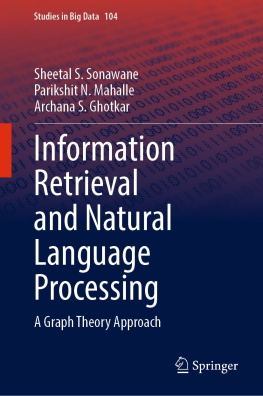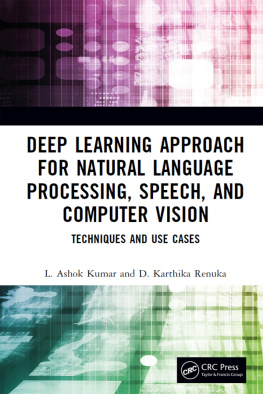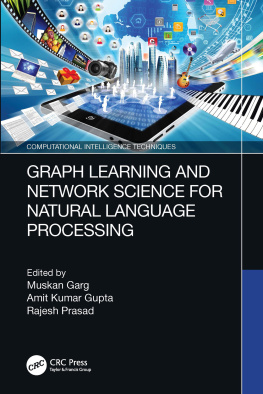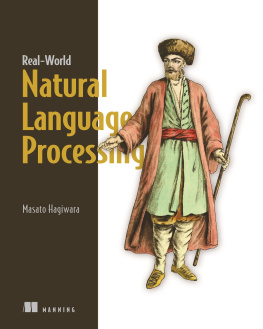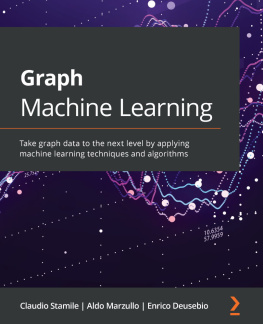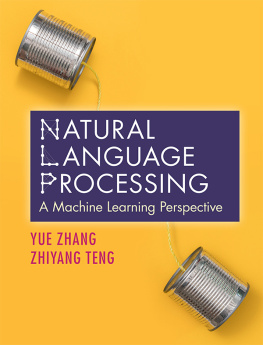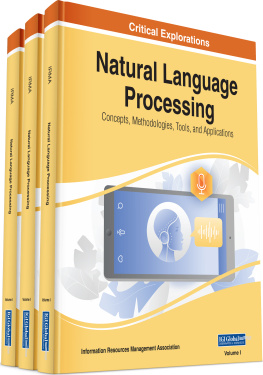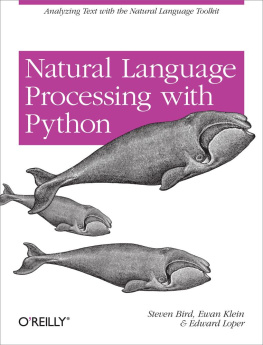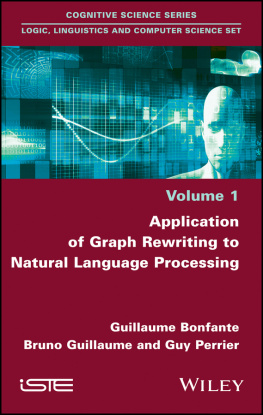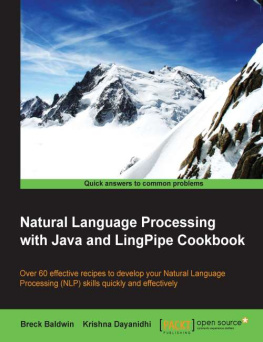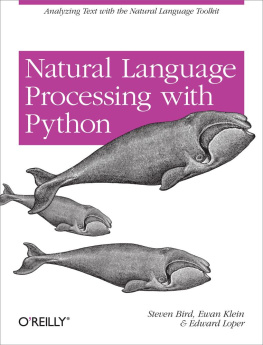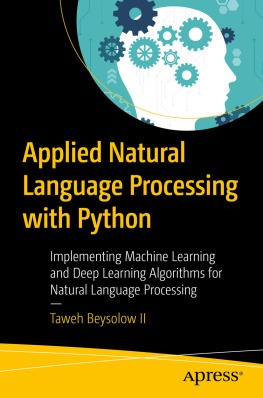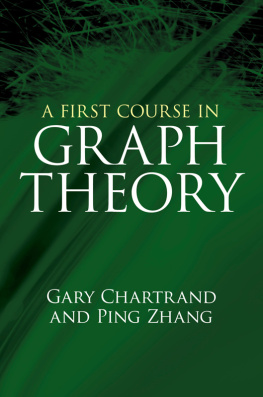Sheetal S. Sonawane - Information Retrieval and Natural Language Processing : A Graph Theory Approach
Here you can read online Sheetal S. Sonawane - Information Retrieval and Natural Language Processing : A Graph Theory Approach full text of the book (entire story) in english for free. Download pdf and epub, get meaning, cover and reviews about this ebook. publisher: Springer Singapore, genre: Art. Description of the work, (preface) as well as reviews are available. Best literature library LitArk.com created for fans of good reading and offers a wide selection of genres:
Romance novel
Science fiction
Adventure
Detective
Science
History
Home and family
Prose
Art
Politics
Computer
Non-fiction
Religion
Business
Children
Humor
Choose a favorite category and find really read worthwhile books. Enjoy immersion in the world of imagination, feel the emotions of the characters or learn something new for yourself, make an fascinating discovery.
- Book:Information Retrieval and Natural Language Processing : A Graph Theory Approach
- Author:
- Publisher:Springer Singapore
- Genre:
- Rating:4 / 5
- Favourites:Add to favourites
- Your mark:
- 80
- 1
- 2
- 3
- 4
- 5
Information Retrieval and Natural Language Processing : A Graph Theory Approach: summary, description and annotation
We offer to read an annotation, description, summary or preface (depends on what the author of the book "Information Retrieval and Natural Language Processing : A Graph Theory Approach" wrote himself). If you haven't found the necessary information about the book — write in the comments, we will try to find it.
Information Retrieval and Natural Language Processing : A Graph Theory Approach — read online for free the complete book (whole text) full work
Below is the text of the book, divided by pages. System saving the place of the last page read, allows you to conveniently read the book "Information Retrieval and Natural Language Processing : A Graph Theory Approach" online for free, without having to search again every time where you left off. Put a bookmark, and you can go to the page where you finished reading at any time.
Font size:
Interval:
Bookmark:
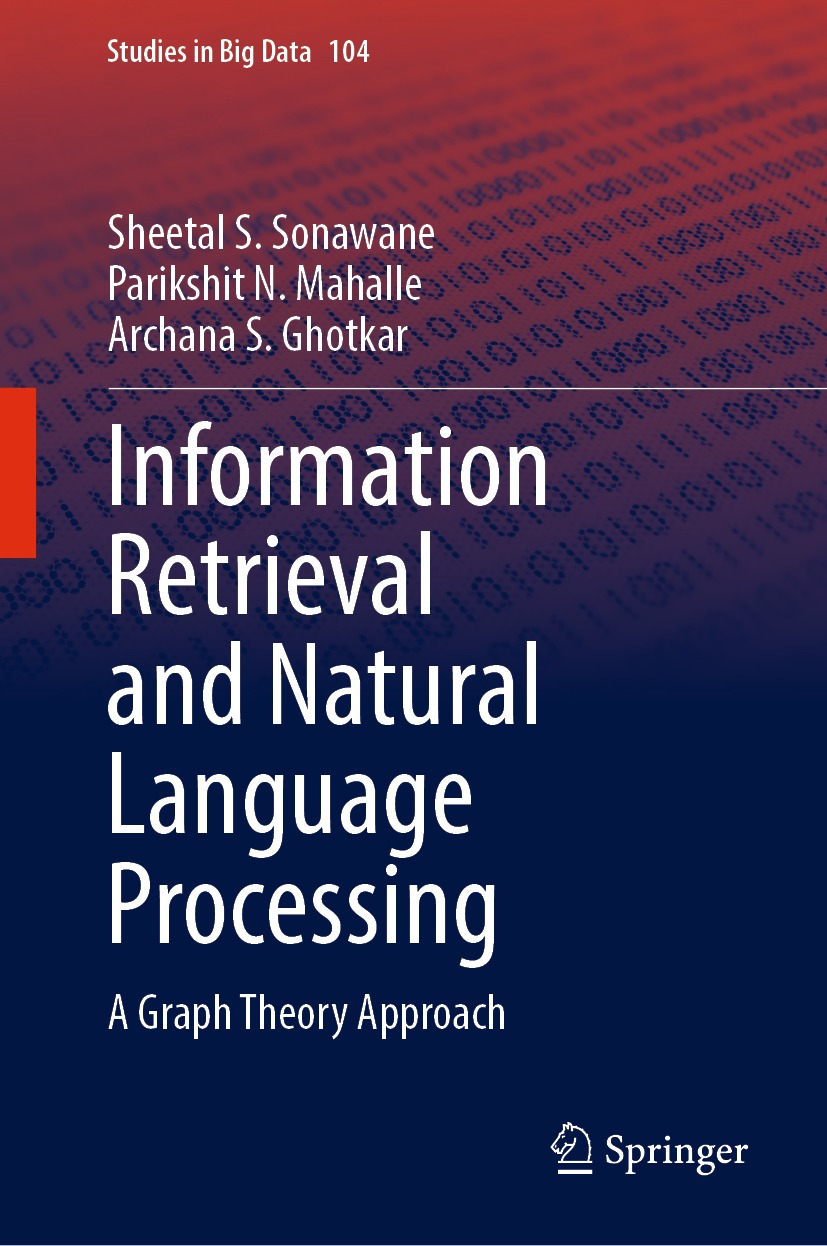
The series Studies in Big Data (SBD) publishes new developments and advances in the various areas of Big Data- quickly and with a high quality. The intent is to cover the theory, research, development, and applications of Big Data, as embedded in the fields of engineering, computer science, physics, economics and life sciences. The books of the series refer to the analysis and understanding of large, complex, and/or distributed data sets generated from recent digital sources coming from sensors or other physical instruments as well as simulations, crowd sourcing, social networks or other internet transactions, such as emails or video click streams and other. The series contains monographs, lecture notes and edited volumes in Big Data spanning the areas of computational intelligence including neural networks, evolutionary computation, soft computing, fuzzy systems, as well as artificial intelligence, data mining, modern statistics and Operations research, as well as self-organizing systems. Of particular value to both the contributors and the readership are the short publication timeframe and the world-wide distribution, which enable both wide and rapid dissemination of research output.
The books of this series are reviewed in a single blind peer review process.
Indexed by SCOPUS, EI Compendex, SCIMAGO and zbMATH.
All books published in the series are submitted for consideration in Web of Science.
More information about this series at https://link.springer.com/bookseries/11970

This Springer imprint is published by the registered company Springer Nature Singapore Pte Ltd.
The registered company address is: 152 Beach Road, #21-01/04 Gateway East, Singapore 189721, Singapore
Calmness, gentleness, silence, self-restraint, and purity: these are the disciplines of the mind
Bhagvad Gita
This book envisioned to present the precise and summarized contents that put more highlights on a mathematical view using graph theory for natural language processing and information retrieval methods and approaches and how graph theory can make better insights from these use cases. Since last decade, there is much advancement in utilizing graph properties in NLP and IR in preprocessing steps. In addition to this, the traditional BoW approach was found to be not sufficient for major text analytics task. The order and co-occurrence relation are achieved easily with graph. Also, major advanced graph types like hypergraph and semigraph are found to be applicable in various IR tasks. The state-of-the-art methods and techniques provide improvement in the performance of the system.
As the data increasing exponentially, unblocking true potential of this growing data is becoming a real challenge. Due to advancement in semiconductor industry, the space is getting cheaper day by day, and in the sequel storage, extraction, transformation and loading of the data are becoming easier. However, the major challenge faced by all IT leaders today is the information retrieval and making sense out of this big data by drawing meaningful insights. The main focus of this book is to present and discuss information retrieval using graph theory and different approaches. This book also presents the role of natural language processing in informational retrieval using appropriate case studies.
This book gives a comprehensive view of graph theory in IR and NLP. This book provides a number of techniques and examples from state of the art. The book provides understanding of graph theory basics, graph algorithms and networks using graph. The book is divided into three parts and contains nine chapters. The first part gives graph theory basics and graph networks, and the second part provides graph-based information retrieval. The third part covers IR recent applications using graph. This book provides a strong foundation to a beginner. All the technical details that include tools and technologies used for graph algorithms and implementation are explained in a clear and organized format.
Part I discusses graph theory basics, graph algorithms and network using graph. It lays the groundwork for the remainder of the book by introducing all necessary and important concepts in graph theory, including the notation, graph types, graph properties and graph representations. An overview of wide variety of graph methods, including shortest path algorithm, depth first search and breadth first search, maxflow network, graph clustering, graph coloring and more, is explained with examples and detail illustration. The term/concept network is a naturally occurring relations. This shows its adequacy to model power-law degree distribution. Zips and Heaps law are also explained with code. Further, social network measures like centrality, degree distributions, clustering coefficients are explained using examples.
Part II provides the basic of information retrieval, text document preprocessing using graph theory and graph theory in information retrieval. It gives insight of various steps included in information retrieval starting from preprocessing, indexing and then ranking. In text document, there are different components like words, phrases, sentences and paragraphs. These text components are connected to each other through various relationships which help to find meaning and relatedness in the document. The relationship among these components may be based on their occurrences in the document or similarity based on their context or concept. The graph representation of text along with graph operations for necessary preprocessing algorithms is explained. The graph characteristics, properties and operations useful to solve document preprocessing task is well explained in this part. The task of getting relevant document based on input query is important in information retrieval. The concept of term weighting in graph with generating extractive and abstractive summary by using graph operations is well explained with different graph types and properties. The applications like question answer system, sentiment analysis and recommendation system are also explored in this part. The connection of data elements is provided semantically using knowledge graph. The importance and its applications are discussed in this chapter. The detailing of its implementation using ontology, RDF, SPARQL and Neo4j is introduced in this part. The open source libraries, datasets and tools are provided in the last part of the book.
Font size:
Interval:
Bookmark:
Similar books «Information Retrieval and Natural Language Processing : A Graph Theory Approach»
Look at similar books to Information Retrieval and Natural Language Processing : A Graph Theory Approach. We have selected literature similar in name and meaning in the hope of providing readers with more options to find new, interesting, not yet read works.
Discussion, reviews of the book Information Retrieval and Natural Language Processing : A Graph Theory Approach and just readers' own opinions. Leave your comments, write what you think about the work, its meaning or the main characters. Specify what exactly you liked and what you didn't like, and why you think so.

